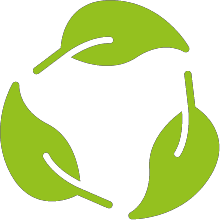Any orders placed after 19 December will be shipped from 2 January onwards.

Sustainability Features

PFC-Free Treatments
What Are PFCs?
PFCs (perfluorinated compounds) are a group of man-made chemicals used to create water, oil, and stain-resistant finishes — especially in outdoor gear. While highly effective, they30 persist in the environment and are slow to break down.
Why PFCs Are Common in Outdoor Gear
Traditionally, PFC-based treatments have been used to create durable water repellent (DWR) finishes, helping water bead and roll off clothing and tents. They extend product life and improve performance in wet conditions — but at a cost.
Environmental & Health Concerns
Persistent in nature: PFCs don’t degrade easily, and trace amounts are now found in water, soil, and wildlife worldwide.
Bioaccumulative: Some PFCs build up in human and animal tissue, raising long-term health questions.
Banned in parts of Europe: Regulations are tightening, with many outdoor brands phasing out long-chain PFCs (like C8 compounds).
Does PFC-Free Mean Less Performance?
No. Our in-house and third-party testing ensures all waterproof garments and tent flysheets meet rigorous hydrostatic head and repellency standards — with or without PFCs.

Solution Dyed Fabrics
What Is Solution Dyeing?
Solution dyeing is a process where pigments are added directly to the polymer solution before the yarn is even formed. Unlike traditional dyeing (which soaks finished fabric in dye baths), solution dyeing locks in colour at the fibre level.
Why It’s Better for the Planet
80–90% less water used
No rinsing or dye baths needed
Less energy consumption
No repeated heating or drying cycles
Fewer chemicals
No dyes, mordants, or effluents to manage
Performance Benefits
Fade Resistance
Colour is embedded in the fibre, meaning it won’t wash out or fade under UV light
Improved Durability
Fabrics are often stronger and more abrasion-resistant
Cleaner Supply Chain
Less wastewater, fewer emissions, and more consistent results

Recycled Materials
What Are Recycled Materials in Outdoor Gear?
Recycled materials in our products primarily come from post-consumer waste — such as used plastic bottles — which are processed into high-quality polyester fibres. These are then spun into durable, lightweight fabrics used across a number of our items.
Where We Use Recycled Materials
Extremities Gloves & Hats – Many styles include 90%+ recycled fabric content, while still offering the same warmth, waterproofing, and wind resistance expected from our high-performance gear.
Select Tents & Accessories – Where fabric performance allows, we incorporate recycled textiles or trims without compromising tear strength, weight, or weather resistance.
Why It Matters
Reduces Waste
Diverts plastic waste from landfill and gives it a second life.
Lowers Carbon Footprint
Manufacturing recycled polyester can reduce CO₂ emissions by up to 30% compared to virgin polyester.
Supports Circular Design
We’re moving toward a gear ecosystem that minimises resource use and environmental impact — while still meeting the demands of serious adventurers.

